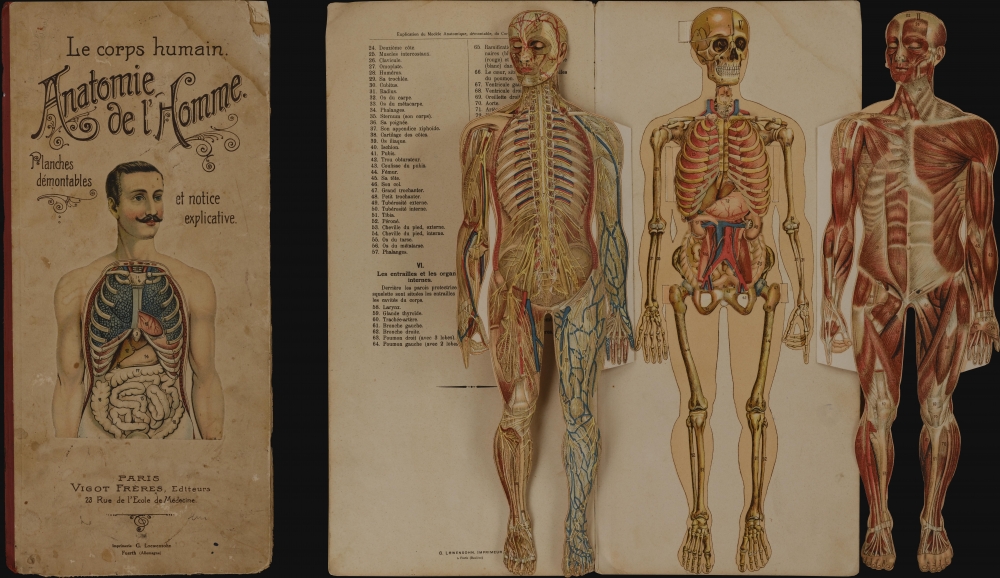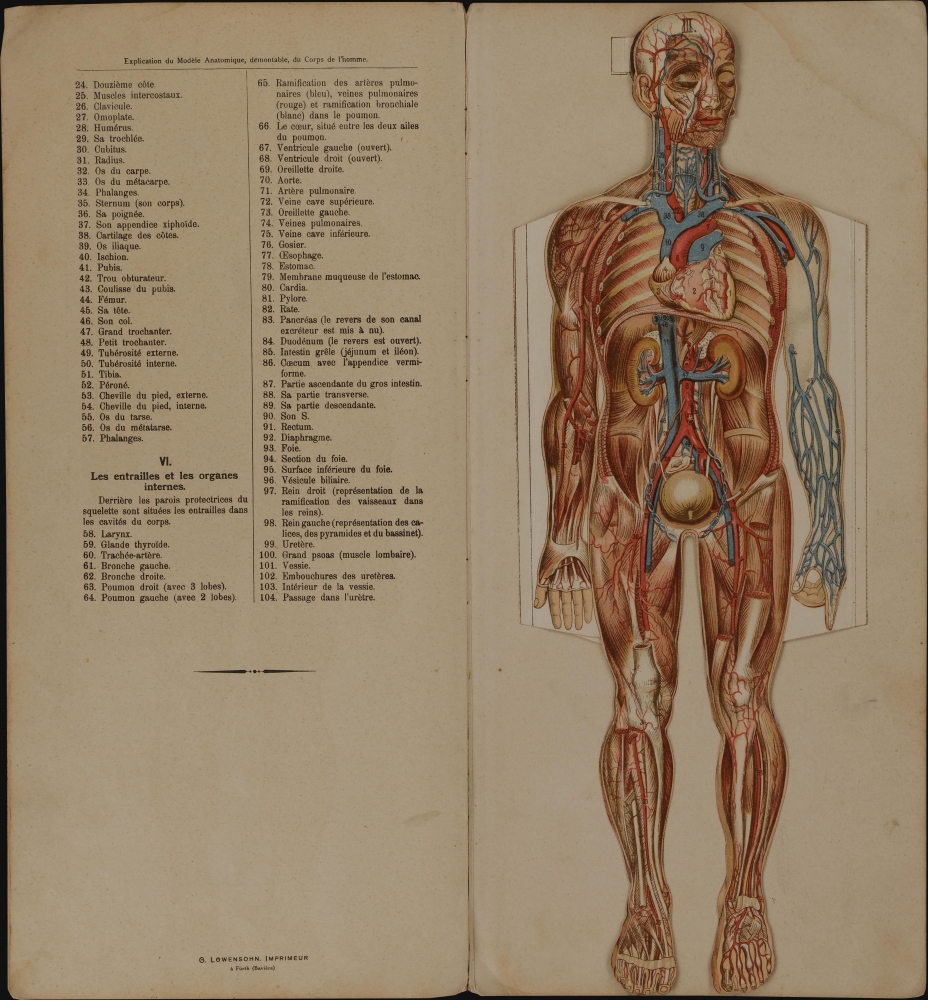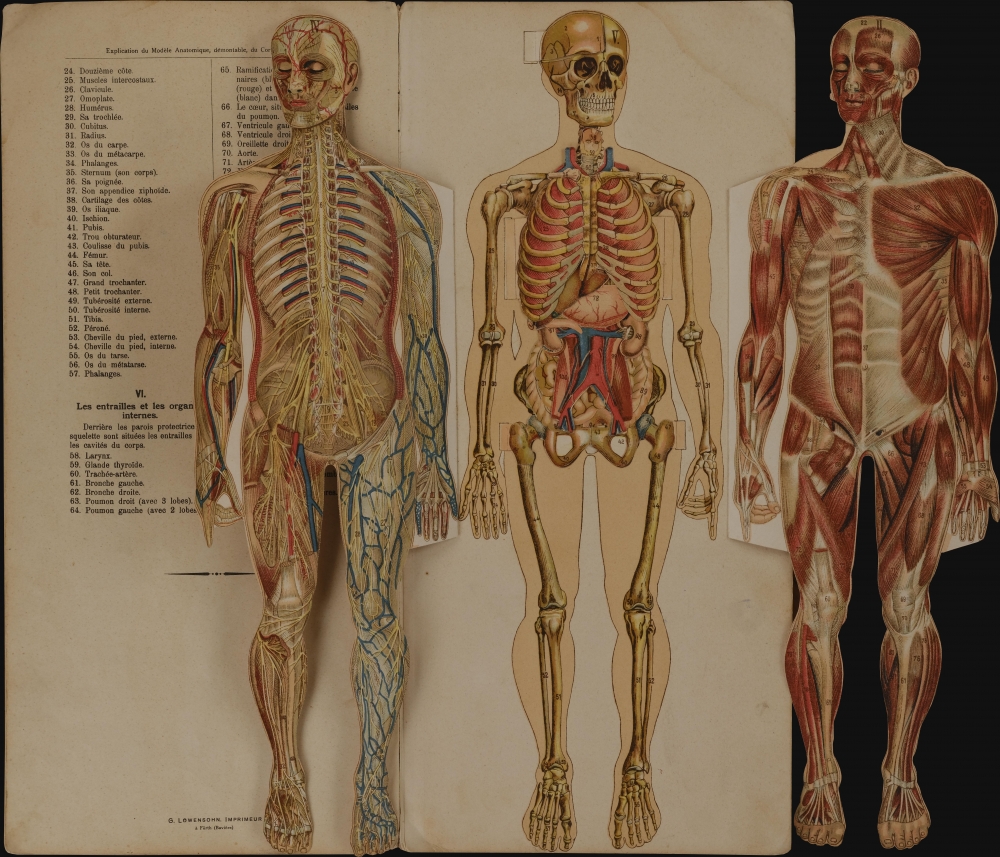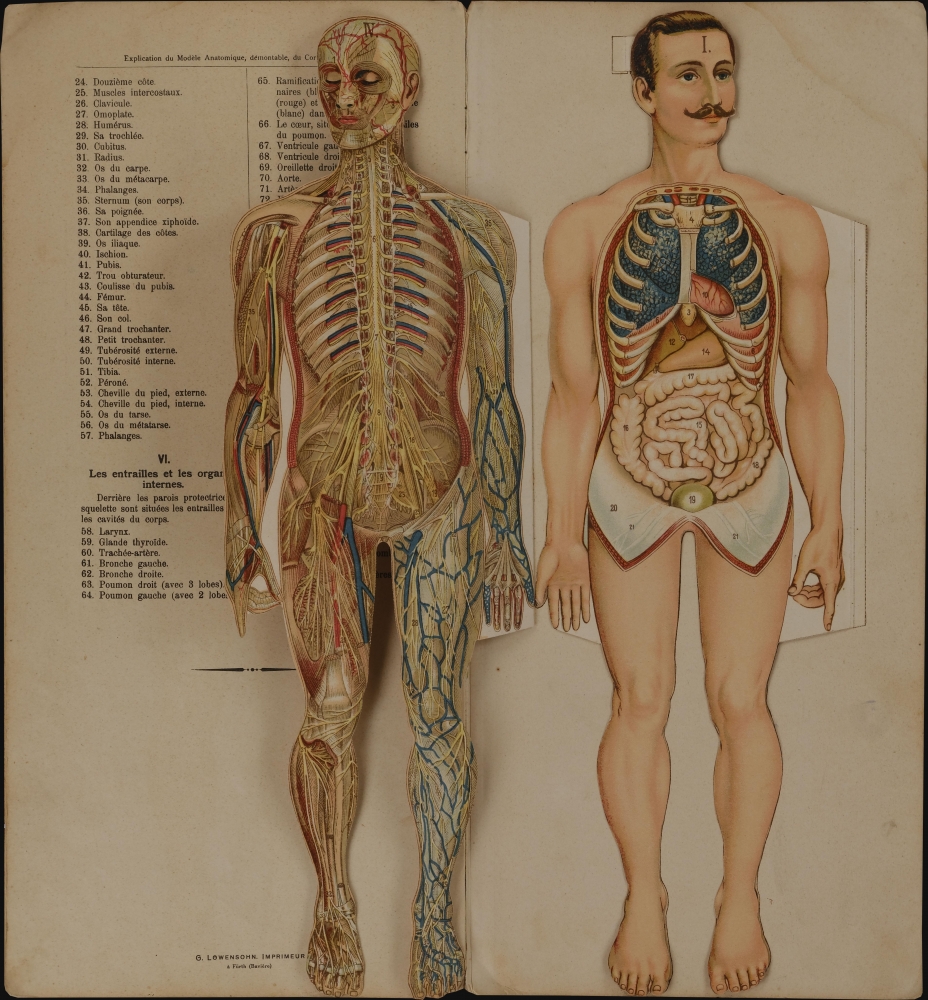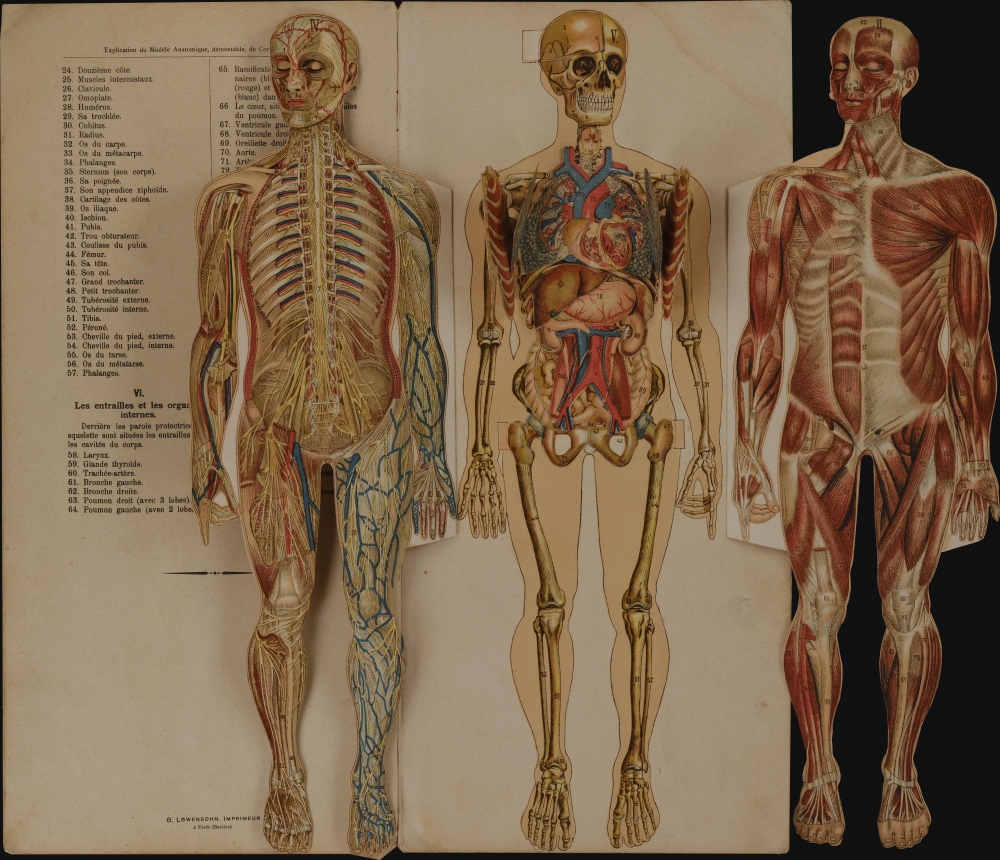This item has been sold, but you can get on the Waitlist to be notified if another example becomes available, or purchase a digital scan.
1900 Vigot Anatomical Model of Man
AnatomieHomme-vigot-1900
Title
1900 (undated) 16.6 x 7.75 in (42.164 x 19.685 cm)
Description
A Closer Look
Multiple interconnected pieces display the anatomy of an adult human male, some emphasizing particular systems (circulatory, muscular, etc.) and others demonstrating the integrated whole. At left, a key corresponds to numbered organs, bones, muscles, and arteries in the body. Schematics like this became a helpful tool for physicians, medical students, and members of the public with a scientific inclination in the late 19th and early 20th century. This was a period when medicine was becoming increasingly professionalized and specialized, with anatomical science developing into a distinct field by drawing on new technologies, especially microscopy.Chromolithography
Chromolithography, sometimes called oleography, is a color lithographic technique developed in the mid-19th century. The process involved using multiple lithographic stones, one for each color, to yield a rich composite effect. Oftentimes, the process would start with a black basecoat upon which subsequent colors were layered. Some chromolithographs used 30 or more separate lithographic stones to achieve the desired product. Chromolithograph color could also be effectively blended for even more dramatic results. The process became extremely popular in the late 19th and early 20th centuries when it emerged as the dominant method of color printing. The vivid color chromolithography produced made it exceptionally effective for advertising and propaganda imagery.Publication History and Census
These plates (plances) were published by Vigot Frères, a Parisian publisher specializing in medical texts, and Gerson Löwensohn, a Bavarian firm specializing in chromolithography, inventive printing formats, and foreign language publications. Though not cataloged in the OCLC, this work is held by the Yale University Center for British Art. A corresponding work, 'Le Corps Humain. Anatomie De La Femme,' was also published, and is similarly sparse in institutional collections.CartographerS
Paul Vigot (1864 - 1937) was a French publisher. After having worked at the publishers Flammarion, J.-B. Baillère and Félix Alcan, he founded the Librairie Paul Vigot in 1890, later renamed Librairie Vigot frères, specializing in medical publications, including translation of medical texts in English. In 1900, they relocated to the rue de l'École-de-Médecine in Paris. After Paul Vigot's death, the firm passed on to his sons, and eventually to his grandchildren in 1971. In 1987, the firm was bought by Quillet, a subsidiary of Matra, but continues to operate under its own name and under the leadership of the descendants of Paul Vigot. More by this mapmaker...
Gerson Löwensohn (1817 - 1871) was a printer, publisher, and lithographer based in Fürth, Bavaria. His training and early work is obscure; he and his father, Isaac (1777 - 1884), may have undertaken copperplate printing in his youth before moving into lithography. He died at a relatively young age, leaving the family printing business in the hands of his wife Helene (1821 - 1914), his two sons Bernhard (1849 - 1910) and Theodore (1853 - 1931), and later a cousin, Albert Rosenfeld (1864 - 1916). At this point, the company began to grow quickly, successively moving to larger locations, purchasing more advanced machinery, and developing a specialty in movable picture books and children's books, including many in foreign languages designed for export (publishing costs were relatively low in Germany at the time). The firm passed on to another generation, Gustav Ernst (1883 – 1945) and Robert (1895 – 1945), both sons of Theodore. Unfortunately, as the family was Jewish, they were forced to sell their business in 1937 and it was reorganized as Pestalozzi-Verlag, which remained a prominent publisher of children's books in the postwar period, going through several mergers before being bought by the Danish company Egmont. Both Gustav and Robert died in the Holocaust after having fled Germany to other countries in Western Europe and being captured there by the Nazis. Learn More...

